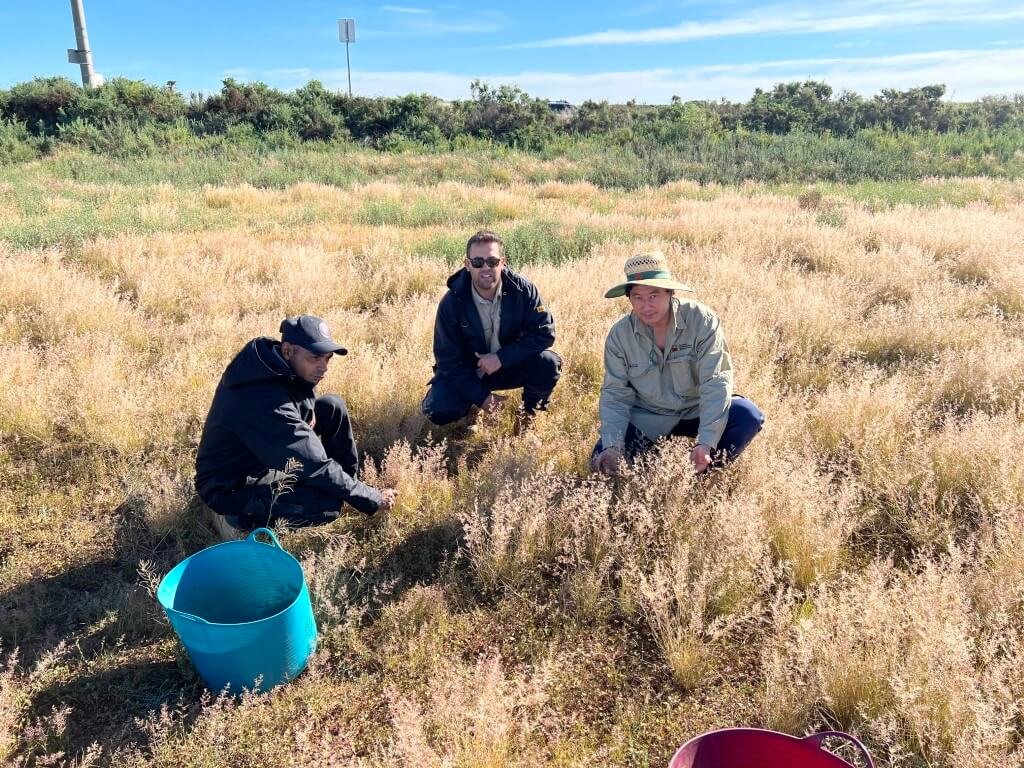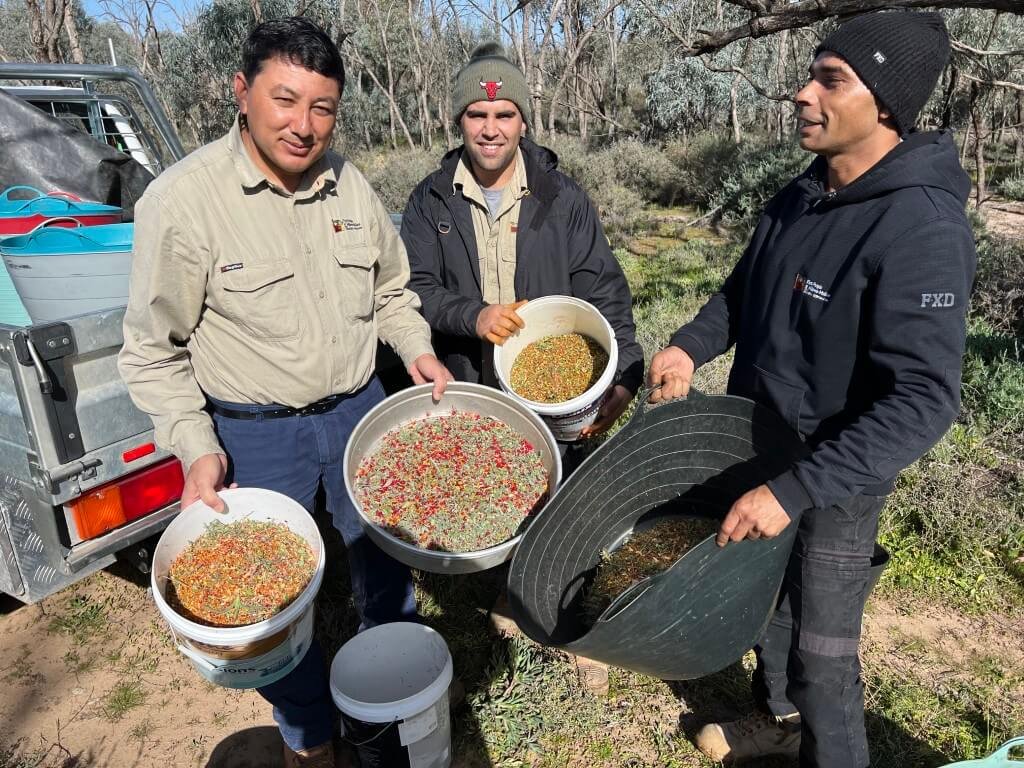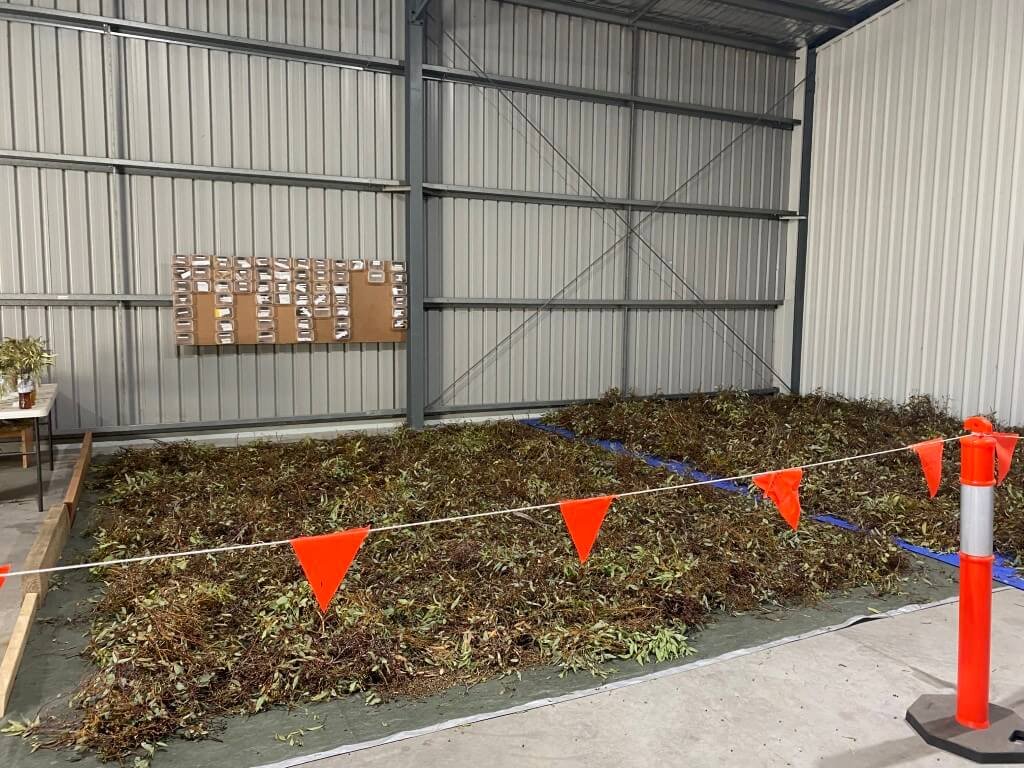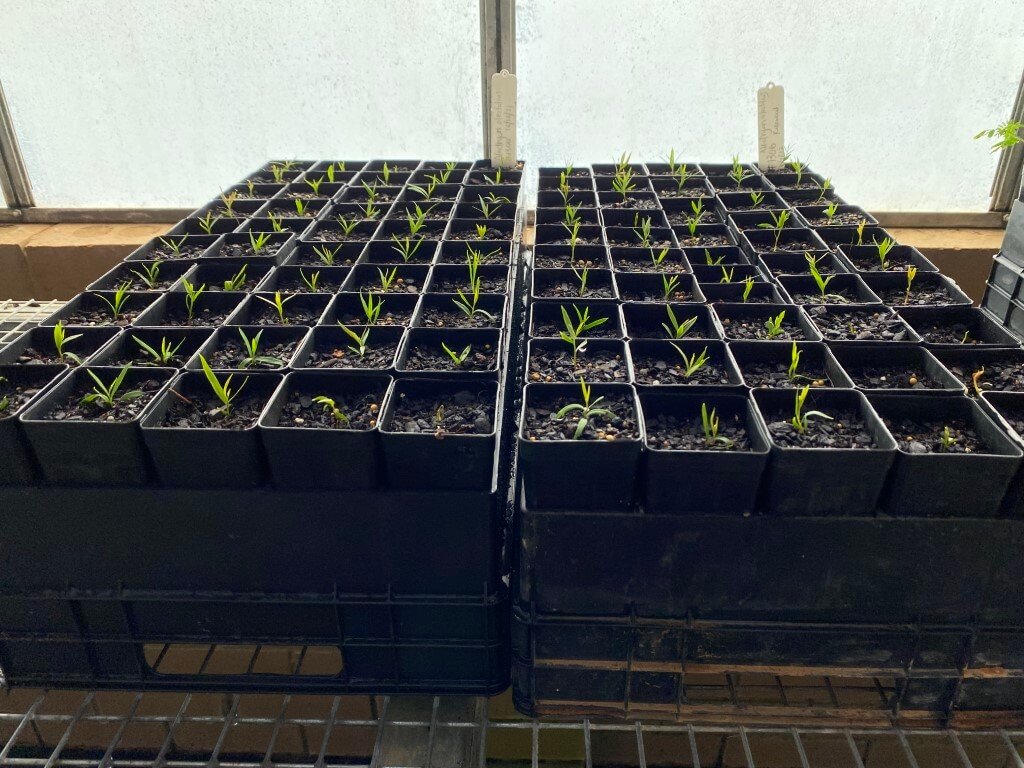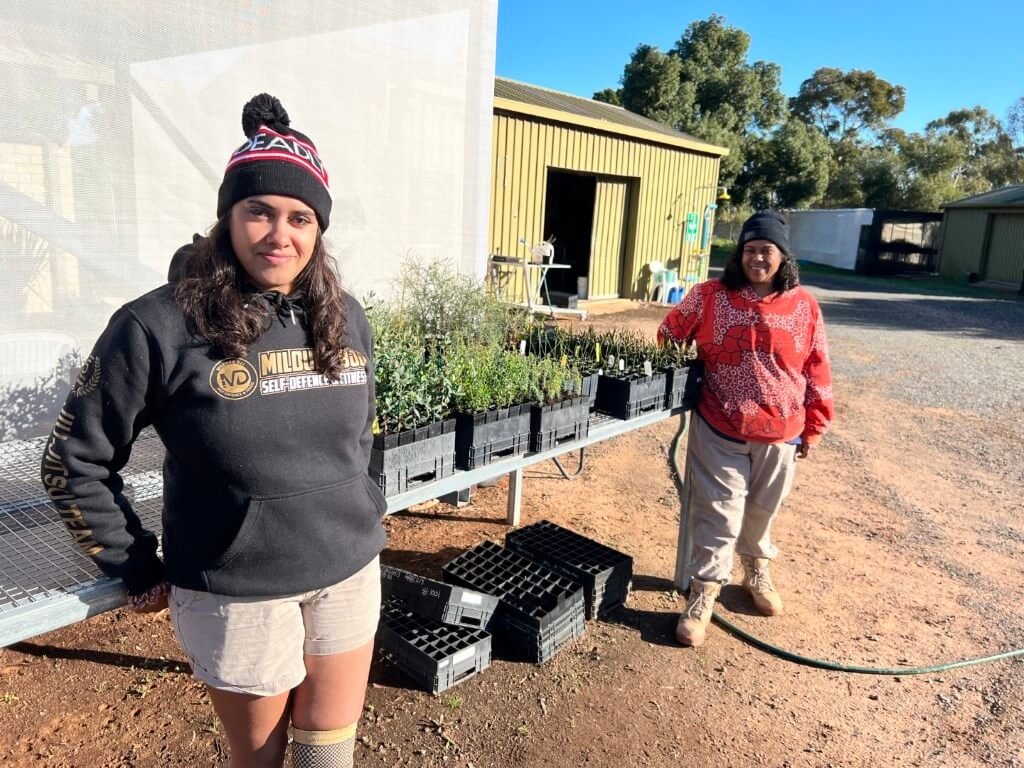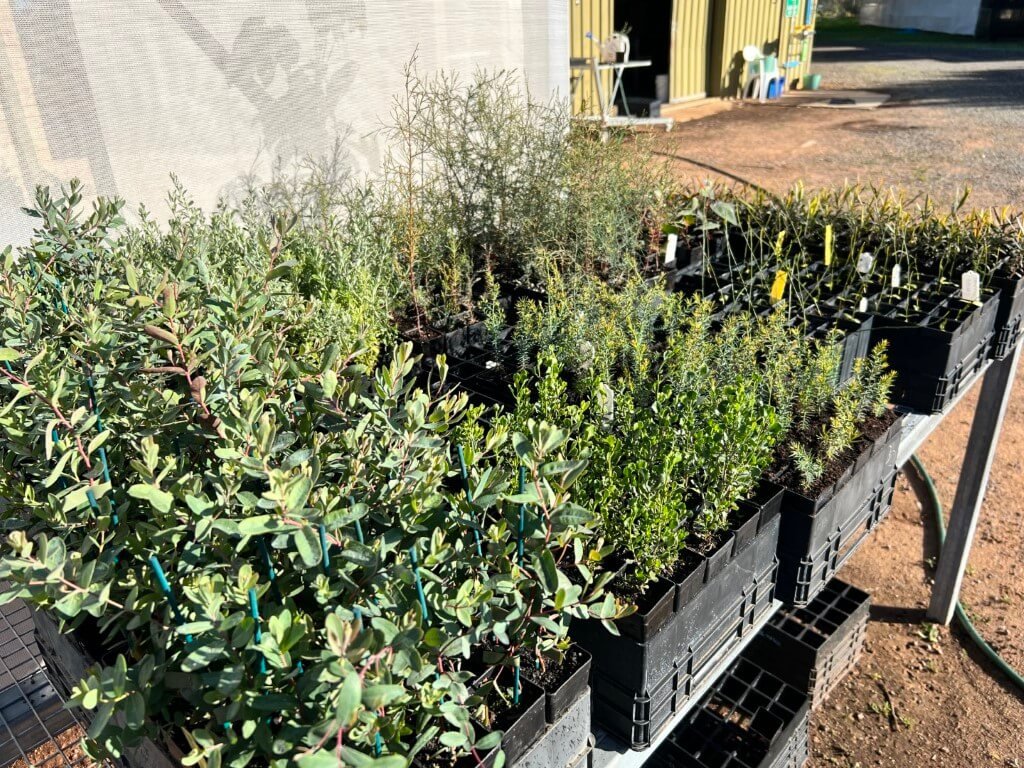Track my tree
In July and August, more than 250 students visit Raakajlim from Carey Baptist Grammar School in Melbourne. We love hosting the students for one of their six nights visiting Hattah-Kulkyne National Park. The Outdoor Education program provides an opportunity for students to give back and restore the land they visit. The students planted trees to revegetate areas of the rare Semi-arid Woodland vegetation community. One of the students had the great idea of a webpage so they could Track My Tree as it grows. Here it is!
The 2022 tree planting extravaganza
Where do the trees come from?
A local indigenous-owned and run nursery grows the trees and shrubs for us. The First People of the Millewa Mallee Belar Nursery grows plants to regenerate Country, as well as food plants like Murnong (Yam Daisies). Not only that, they collect the seed and propagate the plants. Thanks to Sheridan Stephens for sharing these great photos!
Who provides the trees for us to plant?
Our trees were donated by the social enterprise: Fifteen Trees. This great little company helps individuals and businesses reduce their carbon footprint through sponsoring community tree planting projects like ours! For just over $80, fifteen trees can be planted on your behalf. You need to plant about 60 trees every year to bring your annual carbon emissions down to zero! They also offer options for companies to make their fleet, flights, office and customer gifts more sustainable.
In 2021, the trees we planted were gifts for presenters at webinars run by the CAVAL consortium of academic libraries across Australia. A wonderful gift!
“According to Sustainability Victoria, the average Australian lifestyle produces 15,000kg of carbon per year. If that sounds like a lot, it is! Over its lifetime, a tree can collect and store 268kg. This means, we each need to plant 58 trees per year to bring our individual carbon production down to zero.”
What types of trees did we grow?
On Raakajlim, we have a big focus on restoring the threatened vegetation community called Semi-arid Woodlands. In 2022, we planted Native Pine, Cattlebush, Daisy-Bush, Teatree and some Mallee trees. What’s that look like in pictures?
Please visit again to see how your trees are growing!










